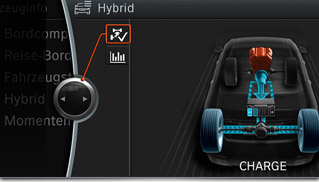 Conserving energy often means finding new sources of energy within a given “system”, like an automobile or truck, and using it. For example, many hybrid cars have regenerative braking systems that extract energy when the brakes are applied. Essentially each wheel has a small electric generator in it that when engaged, produces electrical power. This power, which is normally wasted as heat, is fed back into the vehicle’s batteries. By doing this, one can see an average of 10 to 15 percent improvement in fuel efficiency.
Conserving energy often means finding new sources of energy within a given “system”, like an automobile or truck, and using it. For example, many hybrid cars have regenerative braking systems that extract energy when the brakes are applied. Essentially each wheel has a small electric generator in it that when engaged, produces electrical power. This power, which is normally wasted as heat, is fed back into the vehicle’s batteries. By doing this, one can see an average of 10 to 15 percent improvement in fuel efficiency.
There is another source of automotive energy that has yet to be tapped and a team of MIT students is looking into it. This is the energy that is associated with the mass of the automobile moving up and down during travel. Just think about it, there is a lot of energy being created as a vehicle bounces up and down as it travels down the road, especially if you are traveling off-road. The question is: is there enough energy in a car or truck bouncing up and down to be worth harvesting?
As it turns out, there certainly is. The MIT students outfitted a number of cars with sensors that collected data and determined that there was a lot of energy involved. Some quick calculations showed that there might be a 10 percent improvement in overall vehicle fuel efficiency by using so-called “regenerative shock absorbers”. The next step was to build a prototype and collect some data.
The prototype regenerative shock absorbers built used a small hydraulic system that forced fluid through a turbine attached to a generator. The way it works is that when the vehicle moves up and down, the hydraulic fluid would be forced under pressure to drive a small generator. The entire system would be self-contained on the shock assembly itself.
In their testing, the students found that when fitted on a heavy truck, each regenerative shock absorber could generate up to an average of 1 kW on a standard road. This figure multiplied by 6 shock absorbers supplied some impressive results. Basically, there was enough power here to displace the alternator load in the trucks used. There might actually be enough left over to power additional accessories such as a refrigeration unit in addition.
This study occurred several years ago so we should start to see the commercialization of this technology some point soon.
Article Source: Lynch Chevrolet